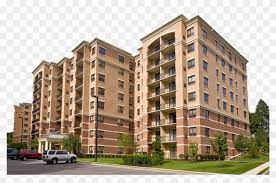When you're in the market to buy real estate, terms like carpet area, built-up area, and super built-up area can become a bit overwhelming. To simplify this for buyers, we've created a thorough guide outlining these essential definitions.

Carpet Area
In straightforward terms, the carpet area is the space where you can actually lay your carpet. This measurement is taken from the outer walls and includes rooms, kitchens, bathrooms, and even staircases within the unit itself. However, balconies, service shafts, and common areas are excluded from this calculation. Notably, modifications to how carpet area is defined have been introduced following the implementation of the Real Estate Regulation and Development Act (RERA) in 2016. Previously, internal walls were not part of the carpet area, but that has since changed.
It’s crucial for buyers to ascertain the carpet area outlined in an approved layout prior to committing to a purchase. This understanding allows buyers clarity on how much carpet space will actually be in their future home. Before settling on a property, don’t hesitate to inquire with your builder about the approved layout. Moreover, comparing two properties based solely on the carpet area can provide valuable insights into pricing.
Formula to Calculate Carpet Area
The carpet area can be calculated by measuring the total area around the inner walls and the floor space.
Built-Up Area
The built-up area represents the total area that includes the carpet area as well as the space taken up by internal and external load-bearing walls. This term corresponds to areas such as external walls, attached balconies, verandahs, and service shafts, inclusive of spaces for servant rooms. However, areas like terraces and common zones—think lifts and staircases—are excluded. The built-up area typically runs about 10% larger than the carpet area.
Formula to Calculate Built-Up Area
To define the built-up area, add together the total floor space, carpets, walls, and balconies.
Super Built-Up Area
As you delve into property purchases, you may encounter the term "super built-up area". This measurement encompasses the built-up area of an apartment along with its proportionate share of common areas. For illustration, if a complex has 8 flats sharing a total of 8,000 square feet of common space, each unit's pro-rata share would be 1,000 square feet. Common space typically comprises areas like lobbies, lift shafts, staircases, and duct spaces. Meanwhile, open spaces such as roof terraces, gardens, and driveways are not included. Generally, the super built-up area can be about 25% larger than the carpet area, often varying from 20% to 40% above it.
Formula to Calculate Super Built-Up Area
To convert super built-up area measurements into carpet area, utilize the loading factor and deduct it from the super built-up area.
Loading Factor
The loading factor represents the difference between the super built-up area and the carpet area.
Thus: Carpet Area * (1 - Loading Factor) = Super Built-Up Area
Calculation Example of Super Built-Up Area
If the super built-up area of an apartment measures 1,200 square feet while the carpet area is 1,000 square feet, here’s how to find the loading factor:
1,000 X (1 - Loading Factor) = 1,200 1 - Loading Factor = 1,200 / 1,000 1 - Loading Factor = 1.2 Loading Factor = 1.2 - 1
Consequently, the loading factor in this scenario would be 0.2 or 20%. Standard practices dictate that this figure is represented as a percentage value.
Important Fact to Know Before Purchasing a Property
Lastly, per section 61 of the Real Estate Regulatory Authority Act (RERA), promoters may be subjected to penalties of up to 5% of the total project cost if they provide misleading information or sell based on super area measurements. It's crucial that this information is accurate and sold in terms of the carpet area.